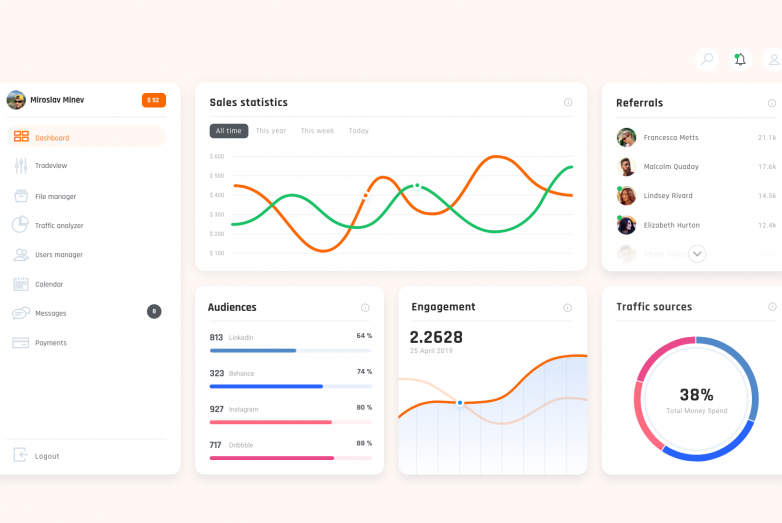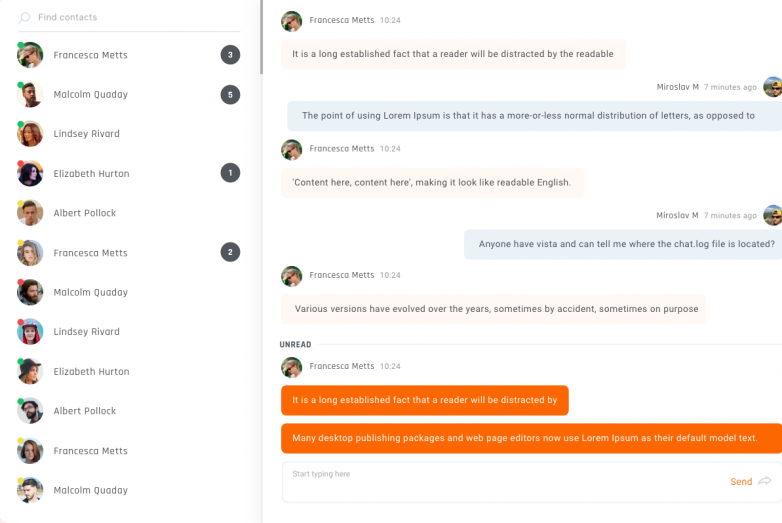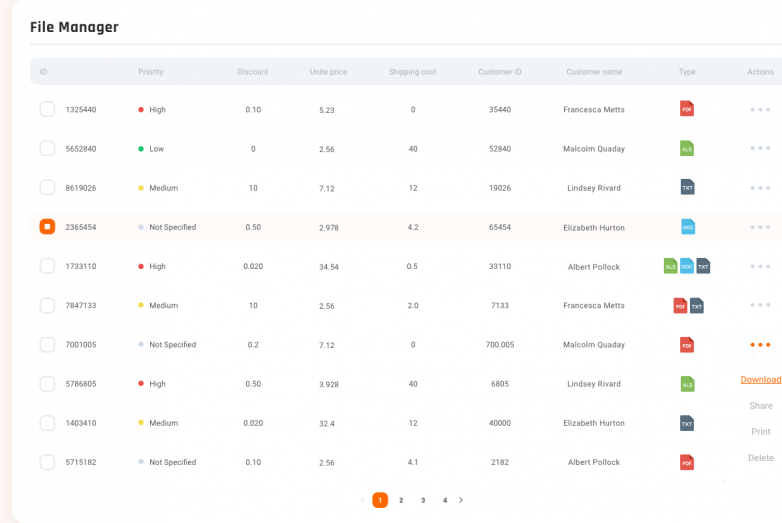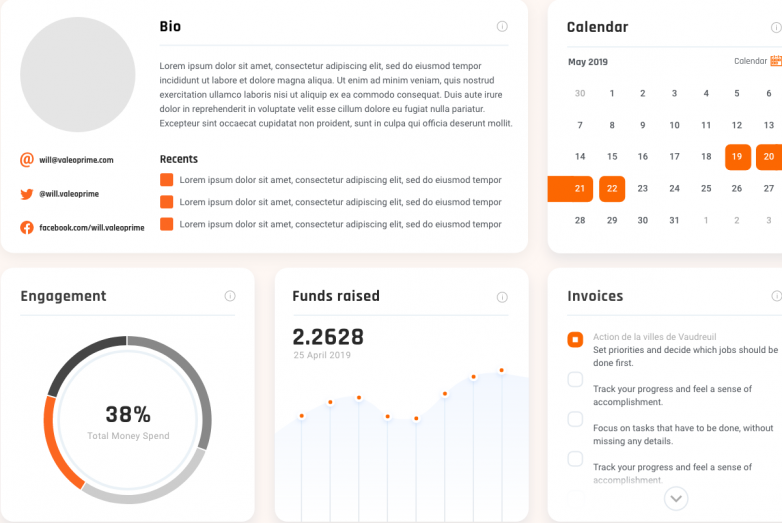BANK AND FINSERV
Banks and financial institutions are among the most complex industries because they provide a lot of products and services and interact with partners, business clients, and customers. The information system of financial institutions is usually very heterogeneous. It is composed of many different sub-businesses such as transaction processing, fraud detection, customer support, underwriting, sales, product management, etc. Historically, banks and financial institutions built in-house customer management applications to manage their clients and their transactions. However, these applications are becoming outdated and need more and more maintenance effort to respond to the challenges and the regulations imposed by the payment industry.
OUR CLIENTS
Improved Sales Strategies
CRM provides a 360-degree view of client profiles. Banks need to identify valuable clients and partners, see the history of interactions, and leverage the data gathered from different applications. You can use the data to gather insights and reports about your clients and build sales strategies to increase your revenue and improve your position in this highly concurrent industry.


Improved Customer Service
By implementing a good CRM, customer service agents can resolve requests quicker and easier thanks to a unique profile per customer. All the interactions are easily accessible. This increases customer satisfaction rates and improves the organization’s reputation. After all, the future belongs to the customer experience around your product or service through each stage of your sales channels.
Improved Consistent Quality
Implement standard business processes followed by everyone in your organization to reduce the processing time of applications and avoid human errors. You can impose your organization’s standards on anything you desire. It can be a sales process, the underwriting process, or a claim/support process. CRM will allow you to ensure uniformity and make sure that your standards come with consistent quality.


Improved Scalability and Adaptability
CRM platforms are highly customizable and could be integrated with any internal or external application easily. This leads your business to make changes in record-breaking time and reduce time-to-market, especially with all the new players on board. Innovation is the driving force behind the most successful companies. CRM makes sure your innovations reach your clients quickly.
LOOKING FOR A TAILORED CRM IMPLEMENTATION?
Solutions Metrix offers platform-agnostic CRM solutions to top banks, credit unions, and many other institutions in the US and Canada.
CRM Software in the Banking Industry
CRM software in the banking industry is a strategic tool created to make customers’ experience easier, better, and more personalized. It helps banks organize customer information, remember details about past conversations, and find new ways to offer customers more of what they need. Because CRM systems give bankers a full picture of each person, they can provide services tailored exactly to that customer. This focused attention helps customers feel more satisfied with their bank. When people feel satisfied, they stay loyal to their bank and are more likely to recommend it to others. Loyal customers who feel understood as individuals also often buy more banking products over time. All of this helps banks compete more effectively in today’s financial market.
Role of Banking CRM Software
In the world of banking, the role of Customer Relationship Management (CRM) is crucial. It helps banks understand and navigate their interactions with customers using organized data. The main goals are to enhance customer service, retain existing customers, and foster sales expansion. These CRM tools, specially created for banks, yield a deeper understanding of the patterns and preferences of customers, crafting tailor-made banking experiences. They also assist in the classification of customers for more focused marketing efforts and managing potential risks. Adopting this tailored CRM strategy enables banks to build more intense, enduring bonds with their clients.
How to Implement CRM in Banks
Implementing CRM systems in banks poses several challenges. These are due to the banking sector’s complex and highly regulated nature.
Key challenges include:
Data Security and Privacy: Banks deal with highly sensitive financial data, so security is an utmost priority. Implementing a CRM system requires solid safety measures. These steps stop data leaks and keep customer data private.
Integration with Existing Systems: Banks often operate with legacy systems. The process of interfacing modern CRM solutions with traditional frameworks can be intricate and time-consuming. Guaranteeing a hassle-free integration without disrupting ongoing operations is a major challenge.
Regulatory Compliance: The banking sector follows strict regulations. Any CRM system implemented must comply with these regulatory requirements, including customer data and privacy, anti-money laundering, and others.
User Adoption and Training: Staff may not like to change existing processes, and adopting new technology can be met with resistance. Effective training and change management can assist employees in seamlessly adapting to the new CRM setup.
Customization Needs: Banks require CRM systems that are tailored to their specific needs. These systems should handle different financial products and customer groups. However, attaining a fit between the system and these needs can be challenging.
Cost and Resource Allocation: Implementing a CRM system requires significant investment, not just in terms of finances but also time. Balancing everyday activities with the process of setting aside the required resources can prove to be a tightrope walk for numerous banks.
Data Quality and Management: you cannot migrate and manage data within a new CRM in a few days. Ensuring the data is correct and high-quality for the system to work well is very important.
Customer Expectations: Updating and refining the CRM is necessary to meet changing customer desires for unique services and online experiences.
Addressing these challenges requires careful planning, a clear understanding of the bank’s specific needs, and a strategic approach to implementation and training.
The process of implementation of banking CRM by Solutions Metrix
The implementation of Customer Relationship Management (CRM) software in banks is a significant step towards digital transformation. It involves integrating technology to improve relationships with customers and streamline banking operations. However, this process requires a strategic approach and includes these steps.
Solutions Metrix is committed to implementing Customer Relationship Management (CRM) software in banks as a pivotal step towards digital transformation. Our process is strategic and thorough, involving these key steps:
- Assessing Organizational Needs
We begin with a thorough assessment of the bank’s specific needs and goals. We then identify the key areas where CRM can add value, such as customer service, sales, or marketing and involve stakeholders from various departments to get a comprehensive understanding of requirements.
- Choosing the Right CRM Solution
When you apply to Solutions Metrix, we select a CRM solution that aligns with the bank’s size, complexity, and specific needs. We also consider factors like customization, scalability, ease of use, and integration capabilities. One of our priorities is prioritizing solutions that comply with banking regulations and data security standards.
- Planning and Strategy Development
Our team at Solutions Metrix team develops a detailed implementation plan that includes timelines, resources, budget, and risk management strategies. We set clear objectives and KPIs to measure the success of the CRM implementation and assign a dedicated team to manage the implementation process.
- Managing Data and Integration
The next step is to conduct a thorough audit of existing customer data for accuracy and completeness. Then, plan to integrate the CRM with existing banking systems and databases. We always ensure that data migration is secure and complies with privacy laws and regulations.
- Customization and Configuration
Now, it is time to pass on the customization of CRM to meet specific banking workflows and processes and set up user roles and permissions to ensure data security and compliance. We always test the system thoroughly before going live.
- Training and User Adoption
It is not enough just to implement CRM. Easy and comprehensive usage plays no less role. Developing a comprehensive training program for all users to ensure they are comfortable with the new system is foremost. You can encourage adoption by highlighting the benefits and efficiencies the CRM system brings or provide ongoing support and resources to address any issues or concerns.
- Going Live and Post-Implementation Review
The best way to avoid disruptions is to minimize them. That’s why we monitor the system closely after going live to quickly identify and resolve any issues. Once we have implemented the CRM, regular reviews are conducted, and feedback is gathered to improve and optimise the system continuously.
- Long-Term Management and Evolution
We cannot say that the CRM system implementation for banks is a one-time thing. Plan for ongoing maintenance and updates to the CRM system. We will help you stay informed about new CRM features and technologies to enhance banking operations and continuously evaluate the system’s performance and adjust as needed.
LOOKING FOR A TAILORED CRM IMPLEMENTATION?
Solutions Metrix offers platform-agnostic CRM solutions to top banks, credit unions, and many other institutions in the US and Canada.